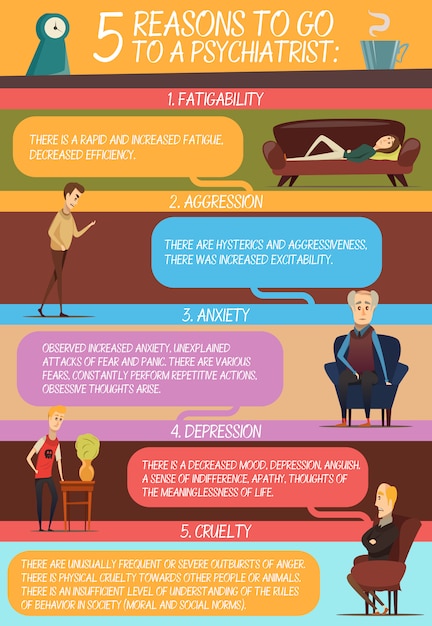Mood stabilizers help to calm areas of the mind that are impacted by bipolar affective disorder. These medications are most reliable when they are taken regularly.
It might take a while to locate the right medication that works finest for you and your medical professional will certainly monitor your condition throughout treatment. This will include routine blood examinations and possibly a modification in your prescription.
Natural chemical law
Neurotransmitters are a group of chemicals that control one another in healthy people. When degrees come to be out of balance, this can bring about mood disorders like depression, anxiety and mania. Mood stabilizers assist to avoid these episodes by aiding manage the equilibrium of these chemicals in the mind. They additionally may be used alongside antidepressants to enhance their efficiency.
Medicines that work as mood stabilizers include lithium, anticonvulsants and antipsychotics. Lithium is maybe one of the most popular of these drugs and jobs by influencing the circulation of salt with nerve and muscular tissue cells. It is frequently made use of to deal with bipolar illness, yet it can additionally be helpful in treating other state of mind disorders. Anticonvulsants such as valproate, lamotrigine and carbamazepine are additionally reliable state of mind maintaining drugs.
It can spend some time to locate the ideal kind of medicine and dosage for every person. It is essential to work with your doctor and engage in an open dialogue concerning just how the drug is benefiting you. This can be specifically practical if you're experiencing any type of adverse effects.
Ion channel modulation
Ion channels are a significant target of state of mind stabilizers and lots of other drugs. It is now well established that they are vibrant entities that can be regulated by a selection of outside stimuli. Additionally, the modulation of these channels can have a range of temporal results. At one extreme, modifications in gating characteristics may be fast and instantaneous, as in the nicotinic acetylcholine receptor/channel system. At the other end of the range, covalent alteration by healthy protein phosphorylation may result in adjustments in network function that last longer.
The area of ion network modulation is entering a duration of maturation. Recent studies have actually shown that transcranial focused ultrasound (US) can stimulate nerve cells by triggering mechanosensitive potassium and sodium channels installed within the cell membrane layer. This was demonstrated by expressed networks from the two-pore domain name potassium family in Xenopus oocytes, and focused United States substantially modulated the present moving via these networks at a holding voltage of -70 mV (ideal panel, relative effect). The outcomes follow previous observations revealing that antidepressants influencing Kv channels regulate glia-neuron communications to contrary depressive-like habits.
Neuroprotection
Mood stabilizers, like lithium, valproic acid (VPA), and carbamazepine, are crucial in the therapy of bipolar disorder, which is identified by recurring episodes of mania and anxiety. These drugs have neuroprotective and anti-apoptotic residential or commercial properties that help to stop mobile damage, and they additionally improve cellular resilience and plasticity in dysfunctional synapses and neural wiring.
These protective actions of mood stabilizers may be moderated by their inhibition of GSK-3, inositol signaling, and HDAC task. Additionally, long-term lithium therapy safeguards against glutamate excitotoxicity in cultured nerve cells-- a design for neurodegenerative disorders.
Researches of the molecular and mobile impacts of mood stabilizers have actually shown that these drugs have a variety of intracellular targets, including multiple kinases and receptors, as well as epigenetic modifications. Refresher course is required to determine if state of mind stabilizers have neurotrophic/neuroprotective actions that are cell kind or wiring specific, and just how these impacts may enhance the rapid-acting therapeutic feedback of these agents. This will assist to develop brand-new, faster acting, extra efficient therapies for psychological diseases.
Intracellular signaling
Cell signaling is the procedure whereby cells connect with their atmosphere and various other cells. It includes a sequence of action in which residential mental health treatment ligands interact with membrane-associated receptors and bring about activation of intracellular pathways that manage important downstream mobile functions.
State of mind stabilizers act on intracellular signaling with the activation of serine-threonine healthy protein kinases, resulting in the phosphorylation of substratum healthy proteins. This activates signaling waterfalls, resulting in adjustments in gene expression and cellular feature.
Numerous state of mind stabilizers (including lithium, valproate and lamotrigine) target intracellular signaling pathways by hindering particular phosphatases or turning on specific kinases. These results trigger a decline in the activity of these paths, which brings about a reduction in the synthesis of particular chemicals that can impact the brain and result in signs and symptoms of depression or mania.
Some state of mind stabilizers additionally work by improving the task of the inhibitory neurotransmitter gamma-aminobutryic acid (GABA). This boosts the GABAergic transmission in the brain and minimizes neural activity, thus generating a calming impact.
